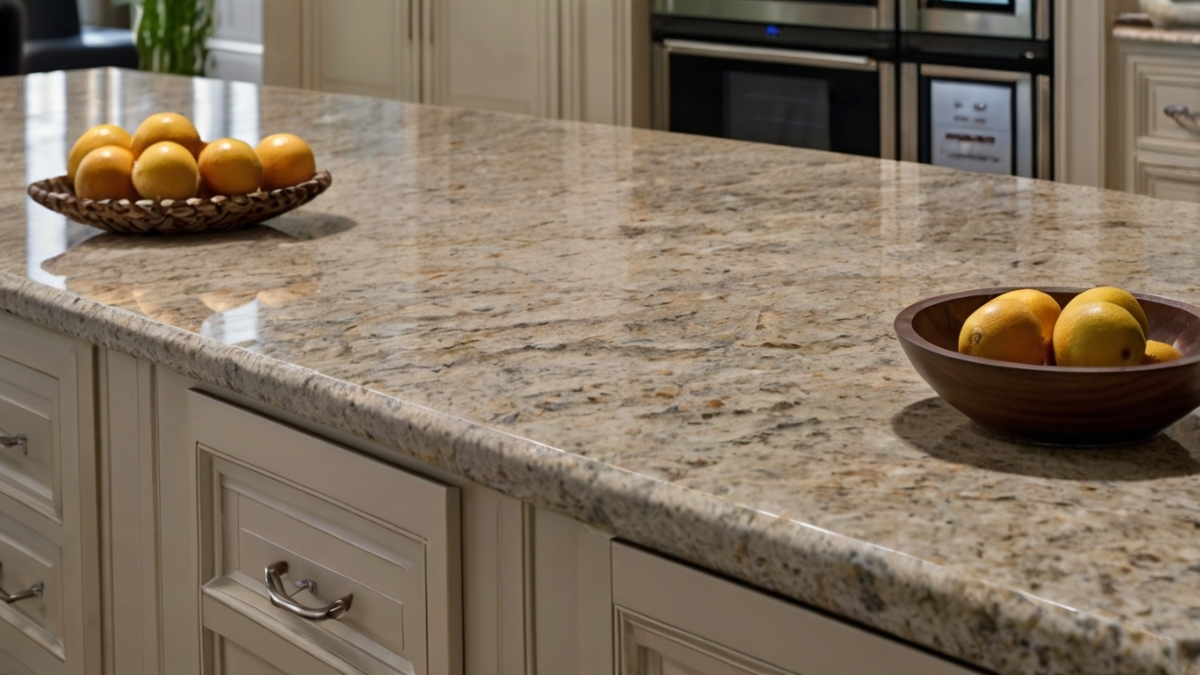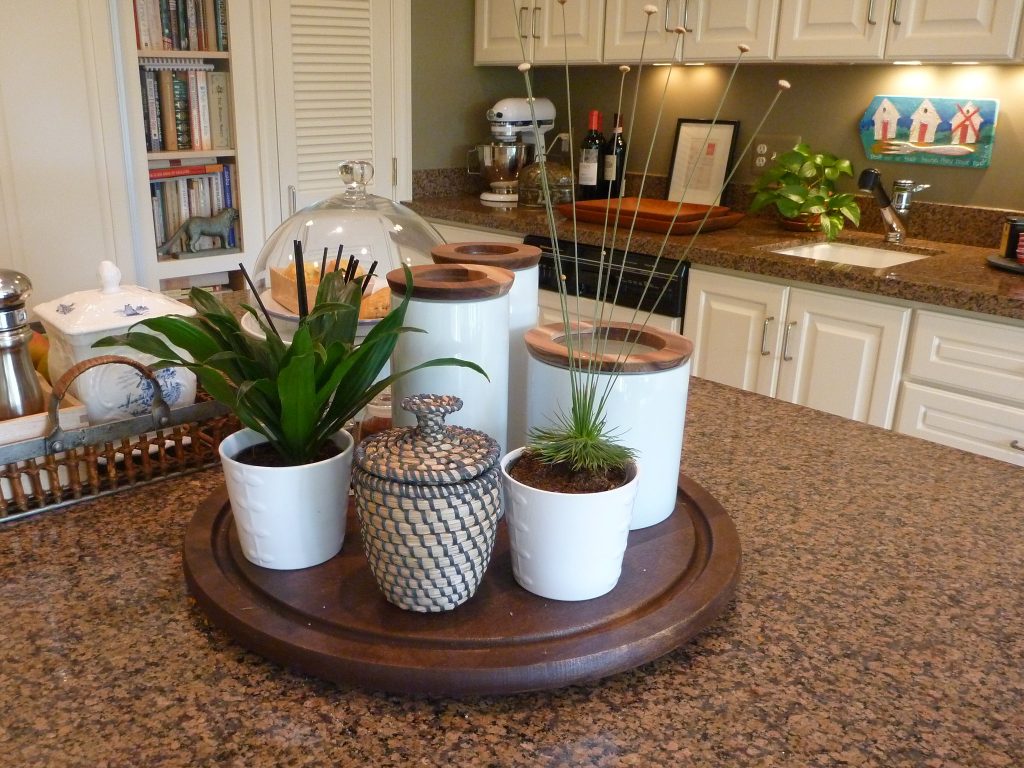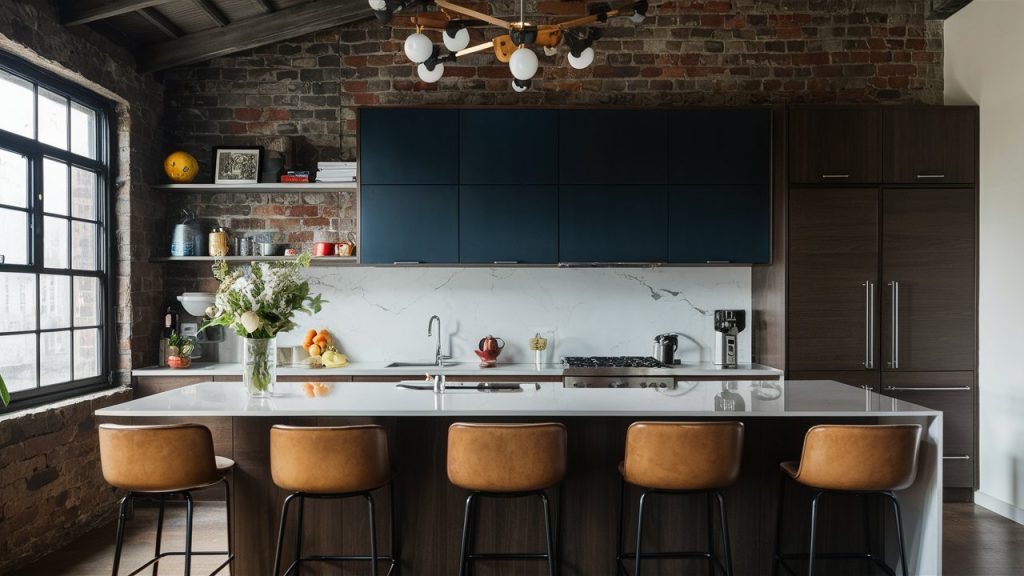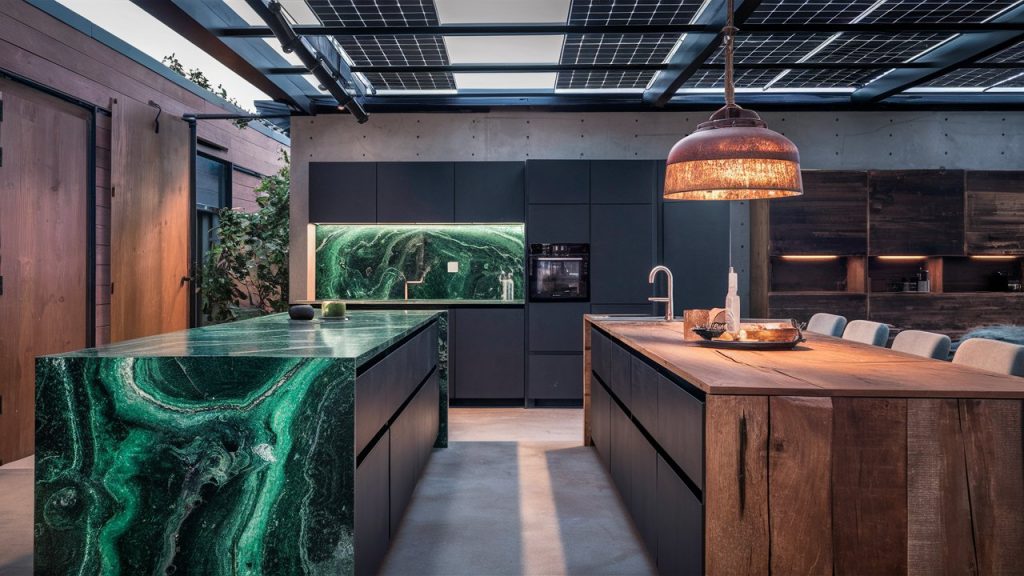Granite countertops are a beloved feature in kitchens for their natural beauty, durability, and upscale appeal. Yet, without proper maintenance, their elegance can fade. From water stains and dull finishes to scratches and etching, granite can deteriorate if not cared for correctly. Whether you’re a new homeowner, interior designer, or managing multiple rental properties, knowing how to properly care for granite ensures it remains the stunning focal point of your kitchen. In this in-depth guide, we’ll walk you through a complete care routine based on years of experience maintaining granite surfaces in homes and rental units alike.
The importance of this routine is similar to investing in reliable gear for your kitchen — like when shopping under amazon small kitchen appliances — you want durability, efficiency, and lasting beauty. And granite care should be approached the same way.
Key Takeaways
Table of Contents
Why Granite Countertops Need Special Care
Granite is more than just a pretty face—it’s a natural stone formed from cooling magma and composed of various minerals like quartz, feldspar, and mica. This geological complexity makes it unique and highly durable. However, granite’s porous nature means it can absorb spills, oils, and bacteria if not sealed and maintained properly. Think of granite like a luxury leather jacket—it looks fantastic, lasts forever with care, but it’s sensitive to the wrong kind of treatment.
In real-world applications, I’ve seen homeowners inadvertently ruin a granite slab by cleaning with vinegar or bleach. One client in Austin, TX, called after noticing dull rings forming around her sink. The culprit? Lemon juice and neglecting to reseal her granite. Fortunately, a full reseal and proper cleaning routine brought back the luster.
Moreover, granite is susceptible to thermal shock. Placing a hot pan directly on the surface can cause cracking in rare cases. That’s why a consistent maintenance plan—starting with understanding its material vulnerabilities—is so vital.
Aesthetically, granite offers stunning natural veining and variation, which gives each slab its own personality. But without the right upkeep, this charm fades. Dirt buildup in micro-pores, staining from wine or oil, or light scratches from dragging appliances can make it look dull and worn.
Understanding why granite needs special care is the first step in protecting it. Unlike man-made surfaces, granite won’t forgive careless mistakes, and the damage can be permanent without expert intervention. By committing to regular care, you’re not only preserving beauty—you’re investing in your home’s long-term value.
Daily Granite Countertop Cleaning Routine
Daily cleaning might seem simple, but doing it right can dramatically affect your granite’s longevity. The key is to clean without causing microscopic surface damage or stripping away the sealant that protects it. Unlike synthetic countertops, granite responds best to a pH-neutral approach. Harsh or acidic products can etch the surface and degrade its natural finish.
The process begins by wiping away crumbs or spills using a microfiber cloth or sponge. Next, lightly mist a granite-safe cleaner or a solution made from mild dish soap diluted with warm water. Gently wipe the surface in circular motions to lift grime without scratching. Finish by drying the countertop with a soft towel to avoid streaks and water marks.
For example, in a Chicago rental unit I manage, tenants were using general-purpose disinfectant wipes that left a dull film over time. We switched them to a granite-safe spray from a brand found under amazon small kitchen appliances cleaning essentials, and the counters regained their gloss in just two weeks.
The drying step often gets overlooked but is crucial. Water spots can etch the surface over time, especially near sinks and dish racks. Keeping a clean towel handy ensures your daily cleaning routine supports the granite’s shine.
Safe vs. Unsafe Granite Cleaners
Type of Cleaner | Safe for Granite? | Why It Matters |
pH-neutral stone cleaner | ✅ Yes | Won’t damage seal or cause etching |
Vinegar, lemon juice | ❌ No | Highly acidic; erodes sealant |
Bleach or ammonia | ❌ No | Breaks down protective layer |
Mild dish soap + water | ✅ Yes | Gentle daily use alternative |
All-purpose spray | ⚠️ Sometimes | Check for alcohol or acids in formula |
Weekly & Monthly Maintenance: Going Beyond the Basics
While daily wiping keeps the surface clear, weekly and monthly maintenance routines dig deeper, removing buildup that daily cleanings miss and preserving your granite’s long-term appeal. A weekly routine should include using a granite-specific cleaner that not only disinfects but rejuvenates the stone’s finish.
Over time, even the cleanest-looking granite can accumulate oils, grease, and unseen grime. A real-world example comes from a rental kitchen in Denver where grease splatter from cooking went unnoticed for months. The result? Dull patches near the stove. After deep cleaning with a professional-grade granite cleaner and microfiber scrub pad, followed by polishing, the surface bounced back.
Monthly care involves inspecting the stone under strong lighting. Look for dull patches, hairline scratches, or any spots where water no longer beads—signs that resealing may be needed. In high-traffic areas, such as around sinks or kitchen islands, wear happens faster. Polish once a month with a non-abrasive granite polish to maintain the stone’s reflective qualities.
It’s also smart to check caulking around the sink or backsplash. Mold or mildew can creep in if moisture sits too long. Replace or clean as needed to prevent undermining your maintenance efforts.
How and When to Seal Granite Countertops
Sealing granite is one of the most critical steps in ensuring long-lasting beauty. Granite is naturally porous, and unsealed stone absorbs liquids, leading to stains, etching, and bacterial buildup. The sealant acts as an invisible shield, making liquids bead up rather than soak in.
To test if your granite needs sealing, pour a few drops of water onto the surface. If it beads up, the seal is intact. If it absorbs quickly, it’s time to reseal. Generally, resealing should be done every 6 to 12 months, depending on the stone type and kitchen usage. Lighter granite is more porous and needs sealing more often.
The sealing process is straightforward. First, clean the surface thoroughly and let it dry completely. Apply a quality granite sealant evenly with a cloth or sponge, let it absorb for the recommended time (usually 15–30 minutes), and wipe off the excess. Buff with a dry towel to restore shine.
One of our clients in Phoenix resealed their granite themselves using a top-reviewed sealant from Amazon. It took under an hour, and a year later, the countertop still repels water and oil with ease.
Recommended Granite Sealing Frequency
Granite Type | Recommended Sealing Interval |
Light-colored granite | Every 6 months |
Dark-colored granite | Every 12–18 months |
High-traffic kitchen areas | Every 6–9 months |
Low-use surfaces | Every 12–24 months |
Best Products for Granite Countertop Care
Choosing the right products for your granite countertops is just as important as the cleaning routine itself. Not all cleaners are created equal, and using the wrong type can gradually wear down your sealant or even damage the stone. The best products are those that are specifically labeled for granite or natural stone. These are formulated to maintain the stone’s natural pH balance and preserve the integrity of the sealant.
One of the most reliable daily cleaners on the market is the Weiman Granite & Stone Daily Cleaner. It’s non-toxic, streak-free, and safe for food prep areas — a feature especially appreciated by homeowners with children or anyone who preps directly on the counter. Another standout is Granite Gold Daily Cleaner, which is biodegradable and safe for use multiple times a day.
For sealing, StoneTech BulletProof Sealer is a go-to product used by professionals. It penetrates deeply and provides up to five years of protection in low-traffic areas. In a practical case, a homeowner in Tampa used BulletProof Sealer once a year on a kitchen island that sees daily use and has not reported any staining or dulling in three years.
If you’re looking to polish, TriNova Granite Polish and Cleaner is both a polisher and cleaner in one. This is ideal for those who want to maintain a glossy finish without applying wax-based products, which can cause buildup. These products are often conveniently found in the amazon small kitchen appliances cleaning section, making them easily accessible when shopping for other home essentials.
When selecting a product, always read the ingredients and confirm there are no hidden acids, alcohols, or abrasives. A clear label indicating it’s safe for granite or stone is non-negotiable. Many homeowners try to save a few dollars by using general household cleaners, but this often results in a dull or pitted surface that costs significantly more to restore.
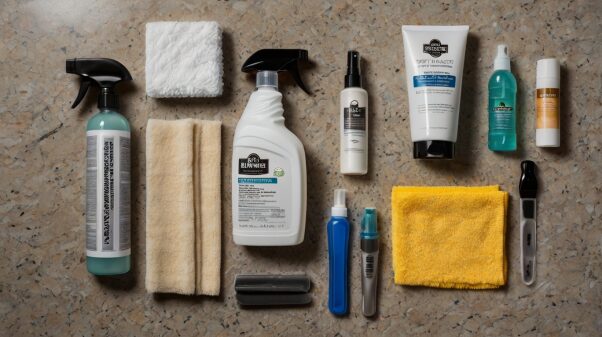
Flat lay of granite-safe cleaning products and tools
Common Granite Countertop Mistakes to Avoid
Granite is strong, but even the toughest stone can deteriorate with improper care. Many homeowners unknowingly make choices that compromise their countertops’ lifespan. Recognizing and correcting these common mistakes can prevent costly repairs and preserve the elegance granite is known for.
Using Acidic or Harsh Cleaners is perhaps the most damaging mistake. Cleaners that contain vinegar, lemon juice, bleach, or ammonia can erode the protective sealant and etch the stone. One homeowner in Los Angeles used a popular disinfectant wipe daily. After a year, the granite had lost its shine, and resealing didn’t fully reverse the damage. Always use a pH-balanced cleaner designed specifically for granite.
Another issue is placing hot cookware directly on the surface. Granite can handle heat, but sudden temperature changes can cause what’s known as thermal shock, which may lead to cracks or discoloration. Always use trivets or heat-resistant mats when setting down pots or pans from the stove.
Letting liquids sit — particularly oils, wine, or coffee — can also lead to staining. The longer a substance stays on the surface, the more likely it is to seep into the stone, especially if the seal is weakened or expired. Blot (never wipe) spills immediately to avoid spreading them.
Some users cut directly on granite, assuming the hardness makes it an ideal cutting surface. While granite won’t easily scratch, repeated cutting can dull your knives and create microabrasions in the surface that make it more susceptible to staining and bacteria.
Even ignoring routine sealing is a major issue. A property manager in Orlando admitted they hadn’t resealed their granite in over three years. When they finally did, the stone had absorbed so much grime that a professional restoration was required.
Avoiding these pitfalls helps ensure your granite countertops stay gorgeous and functional for decades.
How to Remove Stains from Granite Countertops
No matter how careful you are, accidents happen. A splash of red wine, a drip of cooking oil, or a rust ring from a metal can — all can leave stubborn stains on granite countertops. But with the right technique and a bit of patience, most stains can be completely removed.
The most effective method is the poultice treatment. A poultice is a paste made from an absorbent material (like baking soda) and a liquid solvent that draws the stain out of the stone. The recipe depends on the type of stain. For oil-based stains, mix baking soda with water. For organic stains like coffee or wine, mix baking soda with hydrogen peroxide.
Here’s how to apply it: spread the poultice over the stain about ¼-inch thick, cover it with plastic wrap, and tape down the edges to seal in moisture. Leave it for 24–48 hours. As it dries, the paste pulls the stain up into itself. Once it’s fully dry, remove the paste and rinse the area.
In a real-life scenario, a homeowner in Atlanta spilled a bottle of olive oil on her light granite countertop. Despite wiping it quickly, a dark stain remained. Using a poultice method over three days, she lifted nearly all of the discoloration without needing a professional.
If the stain doesn’t come out after one treatment, repeat the process. Avoid scrubbing or using harsh chemicals, which can damage the finish. For very deep or old stains, consulting a granite maintenance service might be necessary — but most household stains can be treated effectively at home.
Scratch, Etch, and Chip Prevention & Repair
Granite is highly resistant to damage, but no surface is completely immune. Over time, granite can suffer from minor scratches, etching (a dull spot often caused by acidic substances), and even chipping along the edges or near sinks. Fortunately, many of these issues can be prevented — and even repaired — with the right knowledge.
Prevention starts with behavior. Always use cutting boards instead of slicing directly on the countertop. While granite may not scratch easily, repeated friction can leave subtle marks that affect its sheen. Avoid dragging appliances like blenders or stand mixers across the surface — lift and place instead.
To prevent chipping, be cautious with heavy objects. A common problem area is the edge of the countertop, especially around sinks where items are often dropped or knocked. A simple solution is adding rubber pads underneath frequently used small appliances (like those found under amazon small kitchen appliances), which reduces impact and vibration.
For minor surface scratches, a polishing compound designed for granite can buff out light marks. These products are safe and easy to use at home. Apply with a microfiber cloth using circular motions, and always follow with a light resealing to maintain protection.
Etching, while rare in sealed granite, can still happen with prolonged contact with acids or harsh chemicals. You’ll notice dull spots that look lighter in color or reflect light differently. These can be treated with a granite polishing kit that contains mild abrasives and polishers.
Chips, particularly along the edges, are best addressed with a clear epoxy repair kit. Many kits include a resin that hardens and becomes nearly invisible once cured. I worked with a client in Brooklyn who chipped the corner of her granite island. Using a granite repair kit, we restored the appearance in under an hour, saving hundreds in repair costs.
Natural and Eco-Friendly Granite Cleaning Options
In recent years, more homeowners have become conscious of the products they bring into their homes — especially in kitchens where food prep happens daily. Using natural and eco-friendly cleaners not only helps protect your granite countertops but also supports a healthier home environment for children, pets, and allergy-sensitive individuals.
Granite, being porous, can absorb the harsh residues from chemical cleaners. That’s why natural alternatives are gaining popularity. One effective homemade granite cleaner involves mixing ½ cup of isopropyl alcohol, 2 cups of distilled water, and a few drops of mild, scent-free dish soap. Add a few drops of essential oils like lavender or lemon for a pleasant fragrance (but not lemon juice itself, which is too acidic). This solution cleans effectively without stripping away the sealant or leaving behind harmful residues.
Another eco-friendly cleaner involves Castile soap and distilled water, a formula used by many green cleaning experts. This blend works well for day-to-day wipe-downs, especially when paired with a microfiber cloth. The key is using gentle ingredients that won’t wear down the protective coating granite needs.
A real-life example comes from a couple in Portland, Oregon, who switched to a natural cleaning routine after noticing skin irritation from their standard cleaner. They now use a DIY mix stored in a glass spray bottle and have reported better shine and no streaks, all while keeping their kitchen free of synthetic chemicals.
These natural solutions are especially useful for those trying to reduce plastic use, lower VOCs in their home, or simply cut costs. They’re simple to mix, safe around food, and gentle on granite.
But remember: natural doesn’t always mean better if not used correctly. Even natural products can harm granite if they’re acidic or abrasive. Always test any DIY cleaner in a small area before full use and avoid ingredients like vinegar or lemon juice.
Granite Longevity: How to Keep It Looking New for Years
Granite countertops are an investment — and like any valuable asset, they deserve regular attention and care. With proper upkeep, granite can remain as stunning and durable 20 years from now as the day it was installed. The key to this longevity lies in consistency, awareness, and a smart maintenance routine.
Many homeowners underestimate how long granite can last with proper care. I recently revisited a home I worked on over a decade ago in San Diego. The homeowner followed a basic care routine — daily cleaning, annual sealing, avoiding acidic cleaners — and their granite island still looks pristine. That kind of long-term payoff proves that good habits matter more than expensive interventions.
Regular maintenance routines, like those outlined in earlier sections, help guard against dullness, staining, or structural wear. Even seasonal checks can help — in winter months, indoor heating can dry the air, making stone more brittle; in summer, increased cooking traffic can mean more spills. Adjust your maintenance rhythm accordingly.
Avoid allowing issues to compound. A small water ring left unattended can eventually penetrate and darken, requiring professional restoration. Likewise, ignoring sealing schedules allows oils and grime to settle deep into the pores of your granite.
To make maintenance easier, keep a log or checklist. Whether digital or on your fridge, tracking tasks like sealing dates, deep cleaning, or product use ensures nothing slips through the cracks. This method is especially helpful for property managers and DIY enthusiasts who juggle multiple responsibilities.
Here’s a sample maintenance schedule that’s worked well for long-term results:
Granite Maintenance Checklist (Year-Round)
Task | Frequency | Notes |
Wipe down surface | Daily | Use pH-neutral cleaner and microfiber cloth |
Deep clean | Weekly | Use granite-specific cleaner |
Polish | Monthly | Restores shine; non-wax formula preferred |
Inspect for wear/stains | Monthly | Check near sinks, stoves, and appliance zones |
Reseal | Every 6–12 months | Test water absorption before resealing |
Consistent care doesn’t take much time, but the rewards are long-lasting — from impressing guests to maintaining resale value.
Conclusion: Preserving Elegance Through Expert Granite Care
Granite countertops are more than just surfaces — they are statements of elegance and durability in the heart of your home. Maintaining them isn’t about perfection, but about protection. Daily wiping, thoughtful product use, regular sealing, and quick action on spills create a powerful, proactive system that ensures your stone surfaces remain beautiful and resilient for decades.
The goal isn’t just to clean granite — it’s to preserve its natural character and sophistication. Whether you’re a new homeowner looking for best practices, a renter maintaining value in a shared space, or a remodeler advising clients on premium materials, these principles are rooted in real-world experience, industry-backed knowledge, and trusted product recommendations.
By applying these expert techniques, you won’t just extend the life of your granite — you’ll elevate the entire look and feel of your kitchen.
Frequently Asked Questions
What is the best way to maintain granite countertops?
The best way to maintain granite countertops includes a combination of daily cleaning with a pH-balanced cleaner, weekly deep cleaning, monthly polishing, and sealing every 6 to 12 months. Avoid harsh chemicals and acidic substances like vinegar or lemon juice, and always use trivets and cutting boards to prevent heat damage and scratches. Consistency is key—it’s like maintaining a high-end appliance from the amazon small kitchen appliances category: gentle care delivers long-term performance.
How often should granite countertops be sealed?
Sealing should be done every 6 to 12 months depending on the type of granite, how often the kitchen is used, and the color of the stone. Lighter granites are more porous and require more frequent sealing. To test if it’s time, pour a few drops of water on the surface—if it absorbs instead of beading up, it’s time to reseal.
What cleaning products are safe for granite countertops?
Only use cleaners specifically formulated for granite or natural stone. These are pH-neutral and free from acids, alcohols, and abrasives. Popular safe options include Weiman Granite Cleaner, Granite Gold, and DIY solutions using mild dish soap or isopropyl alcohol diluted with water. Avoid using vinegar, bleach, or ammonia-based sprays.
How can I remove stains from granite countertops?
Stains can be removed using a poultice paste, which pulls the stain out of the granite’s pores. For oil-based stains, use baking soda and water. For organic stains like wine or coffee, use baking soda and hydrogen peroxide. Cover the area with the paste, seal it with plastic wrap, and let it sit for 24–48 hours. Repeat if necessary.
How do I prevent scratches on granite countertops?
To prevent scratches, always use cutting boards instead of slicing directly on the granite. Avoid dragging heavy pots or small kitchen appliances across the surface. Lift and place instead. Also, use rubber or felt pads under appliances and decor items to minimize abrasive contact over time.
Can I restore dull or damaged granite countertops myself?
Yes, minor restoration can often be done at home. Use a granite polishing compound to restore shine and a granite repair kit for small chips. For dullness caused by chemical damage or deep staining, resealing and polishing usually help. In severe cases, a professional granite maintenance service might be necessary to fully restore the surface.

Robert Martin is a passionate blogger and versatile content creator exploring the intersections of personal finance, technology, lifestyle, and culture. With a strong background in financial literacy and entrepreneurship, he helps readers make smarter money moves, build sustainable side hustles, and achieve financial independence.
Beyond finance, Robert shares his insights on home decor and gardening—offering practical ideas for creating beautiful, functional living spaces that inspire comfort and creativity. He also dives into the dynamic worlds of sports and celebrity news, blending entertainment with thoughtful commentary on trends that shape today’s pop culture.
From decoding the latest fintech innovations to spotlighting everyday success stories, Robert delivers content that’s informative, relatable, and actionable. His mission is to empower readers to live well-rounded, financially confident lives while staying inspired, informed, and ahead of the curve.

